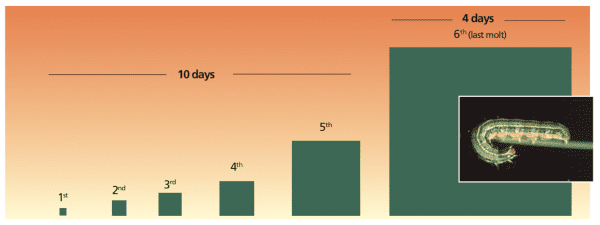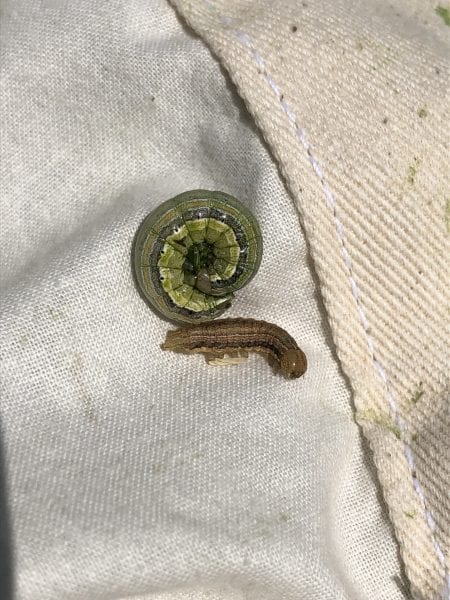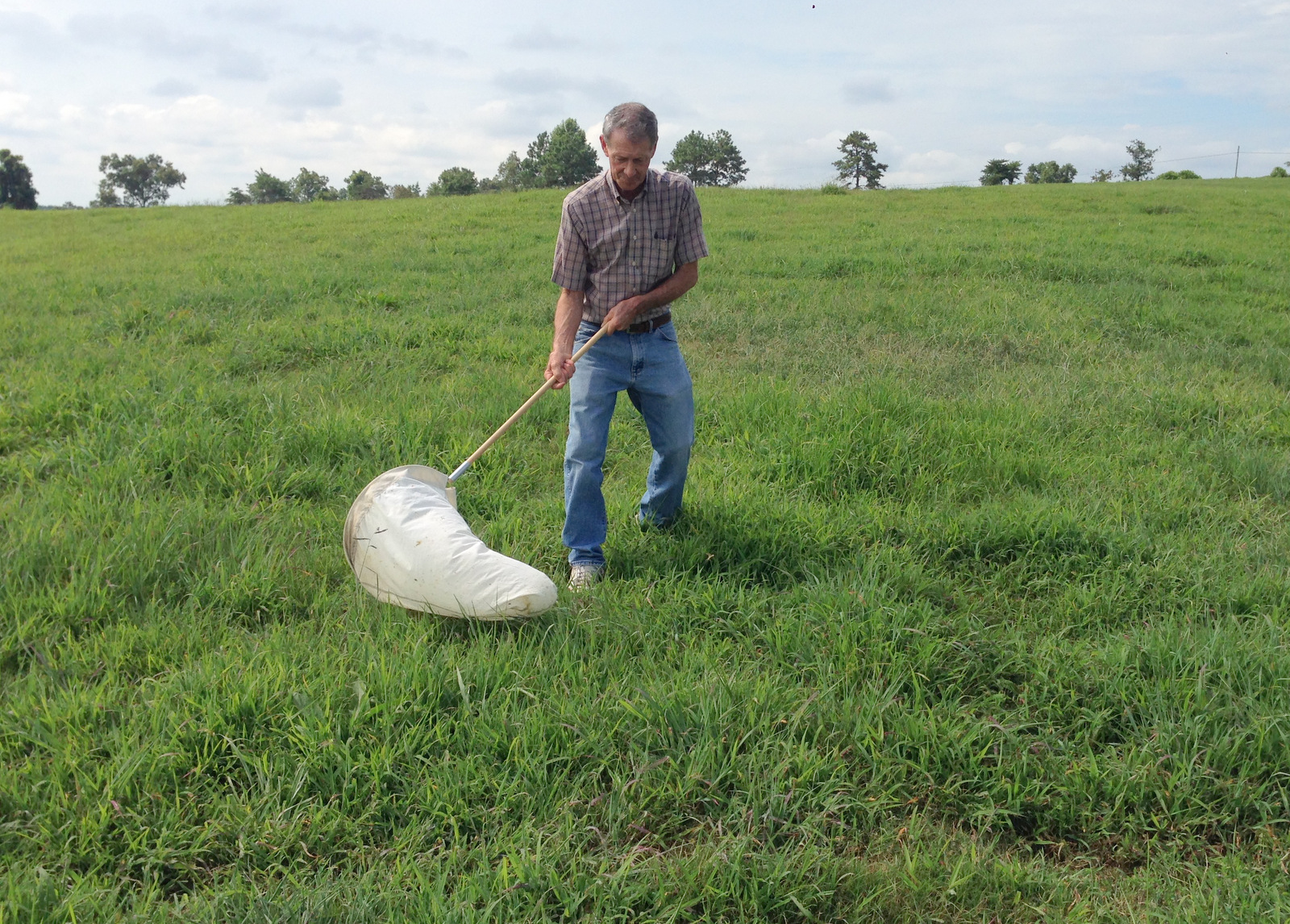Farming

Two species of armyworms are consistent pests of forages and pastures in Alabama. The true armyworm and fall armyworm both belong to a family of moths called Noctuidae, which includes other important pests such as the corn earworm. A cool, wet spring can lead to outbreaks of the true armyworm in cool-season grasses.
The true armyworm, Mythimna unipuncta, is a spring pest of cool-season grasses and fall fescue. Fall armyworms, Spodoptera frugiperda, are summer pests of bermudagrass, fescue, and fall-seeded grasses. Armyworms get their name from the large populations moving all at once into a previously un-infested area.
In Alabama, producers typically see true armyworms every year in forages. However, only during outbreak years do they reach pest status and cause economic damage. On the other hand, fall armyworms are a consistent pest that reach economic levels nearly every year.
In the springtime, true armyworms can significantly damage forage grasses or small grains. Fall armyworms usually first appear in early fall in bermudagrass. In outbreak years, fall armyworms can also show up in the spring. Damage from both fall armyworms and true armyworms often goes unnoticed until the worms are bigger and severe defoliation occurs. It may even seem like the damage happened over night. When the worms are early instars, they are small and do not eat much. However, as they get older and bigger, the later instars consume much larger amounts (Figure 1).

Figure 1. Relative amounts of food eaten by a fall armyworm caterpillar during each growth stage. In summer, a caterpillar feeds for about 14 days, but most of the food is consumed in the last four days.
Identification

Figure 2. True armyworms in a sweep net.
Eggs of true armyworms and fall armyworms look similar. They are laid in masses of 50 or more eggs, usually on lower leaves. Areas of well-watered, dense growth are especially favorable for egg laying. The female moth covers the egg mass with scales that give them a white or pink fuzzy appearance. The eggs are white or beige and flat against the leaf surface with a dome-shaped top.
True armyworms look similar to fall armyworms but the two can be distinguished by looking at their head capsule. Fall armyworms have an inverted “Y” on their head, while true armyworms are lacking the “Y” and have a mottled coloration. True armyworms (Figure 2) have varied coloration but will have a pair of dark spots in each abdominal segment. They also have multiple longitudinal stripes down their body. Fall armyworms can be distinguished by their characteristic head capsule and also four small dark dots on the last abdominal segment. These four dots form a square and are found on every fall armyworm.
Damage
True armyworm damage is similar to that of fall armyworm. True armyworms will defoliate the foliage but can also clip or damage the heads of maturing wheat plants. In young corn, they will chew the plants at the ground, similar to cutworm damage. True armyworm damage appears brown, similar to drought damage. The area will grow as the armyworms continue to feed on foliage. True armyworms prefer fescue and other cool-season grasses and will rarely feed on bermudagrass. There are several generations per year, but it is the first generation in the spring that is responsible for the damage.
Because small worms are hard to spot and do not consume large amounts, scouting regularly is important. Use a sweep net in wheat or pastures to find worms. Avoid scouting in the heat of the day as the worms will be hiding in or on the soil or in leaf litter. Visit several parts of the field when you are scouting to get an accurate representation. Increased bird activity in the field may also be a sign that you have armyworms.
Control
High temperatures and natural enemies, such as parasitoids or predators, will help reduce populations of true armyworms in the field. But remember that 80 percent of the damage is caused by the biggest caterpillars as they get ready to pupate. So, if large caterpillars continue to feed, incidental defoliation may turn to head clipping and thus yield loss. An insecticide application should only be made after considering the size of the worms and the growth stage of the hay. If the field is ready for harvest, you can cut and bale as soon as possible rather than applying an insecticide.
There are several chemicals that will work well in grains and pastures, but it is important to get adequate coverage regardless of the product. Larger worms are harder to control than smaller worms. Pyrethroids can provide immediate knockdown and work well on small or medium worms. Insect growth regulators work best on small worms and will have no effect on larger worms that are ready to pupate. Pyrethroids will have a shorter residual than insect growth regulators.
Follow the label for grazing or harvest restrictions and choose one that has the necessary residual for your infestation. Treatments in small grains are warranted when larval numbers exceed four larvae per square foot before pollen shed and eight larvae per square foot after pollen shed. In grass forages, treat if you find two to three larvae per square foot. A list of approved chemicals can be found in the Alabama Extension Pasture and Forage IPM Guide.

